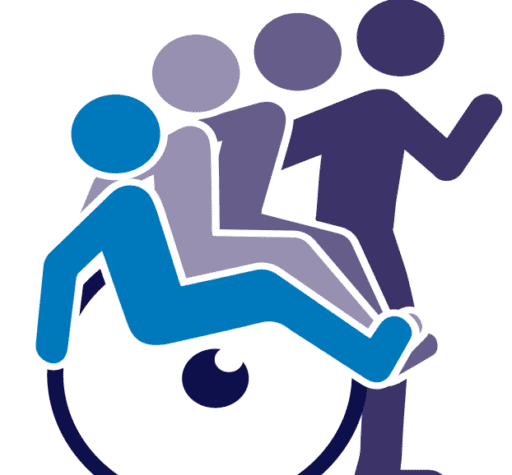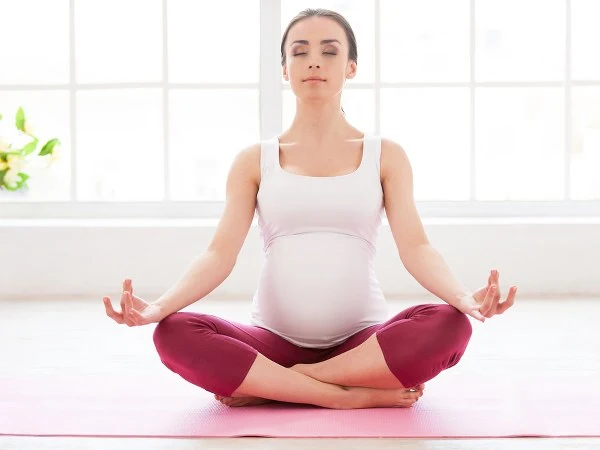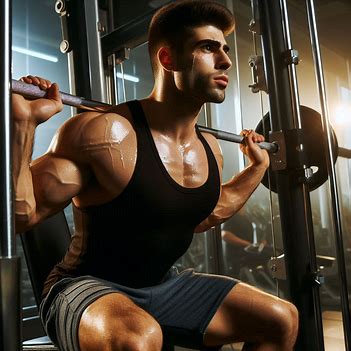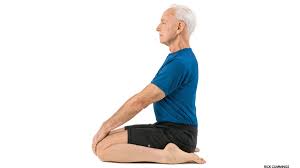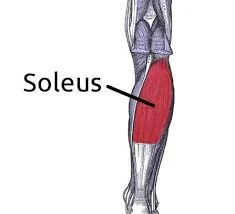Donkey Kick Exercise
Donkey kicks strengthen your glutes, or buttocks, and hamstrings, which are the muscles at the back of your legs. They don’t require any particular equipment and may be performed anywhere.
You may use them in a range of regimens, including lower-body training, glute-focused routines, full-body workouts, or simply as a simple ‘ movement snack’ throughout the day. You can easily alter donkey kicks to fit your objectives and degree of fitness.
Table of Contents
What are donkey kicks?
Donkey kicks (also known as donkey rear leg lifts) include kneeling on all fours with your back straight and parallel to the ground, then elevating your leg and propelling your foot straight up towards the ceiling. Numerous muscle groups that help relieve hip pain are strengthened and activated by this action.
Beginners can tone their glutes with easy bodyweight exercises like donkey kicks. Because there are other varieties, we’ll stick with the basic donkey kick for the time being, but more intricate versions (adding equipment like resistance bands) are available if you want to push yourself even farther.
Muscles Worked In Donkey Kicks
- Gluteus maximus
- Gluteus medius
- Hamstrings
- Lower back
- Core muscles
How To Do Donkey Kicks
Getting the form and position correct is essential. Although this activity is unlikely to cause any harm to you, you could waste your time. Focus on squeezing the glutes and use the proper position and movement to make this technique efficient and effective:
- Start by placing your hands shoulder-width apart on the mat and your legs hip-width apart.
- Pay attention to keeping your back straight. Avoid allowing your lower back to droop. Also, don’t round it up.
- Maintaining the right knee bent at a 90-degree angle, raise your right leg up while activating and strengthening your core.
- Imagine that the bottom of your foot is going to hit the ceiling with a flat pressure during this movement.
- During the leg lift, tighten your glutes.
- Keep your spine neutral and avoid lifting so much that it begins to arch.
- Once you’re back where you started, do the exercise again with your left leg.
- The motion ought to be gradual. Moving slowly helps you avoid making the error of leveraging your swinging leg’s momentum. Lifting with your glutes will allow you to feel the burn as you squeeze and lift.
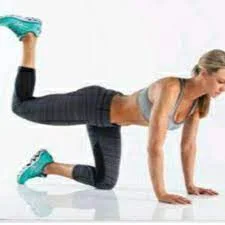
Variations While Performing Donkey Kicks
Learn the fundamental donkey kick first. Making the most of this exercise requires using perfect form. Without experiencing any pain, you can assume the posture and raise your leg a hundred times. Before proceeding to these increasingly difficult versions, ensure you perform them correctly and generate heat in your glutes.
- Weighted Donkey Kick
- Donkey Kicks with Resistance Bands
- Add Some Rotation in the Hip
- Use a Smith Machine
Weighted Donkey Kick: Add weight as a typical donkey kick becomes simpler and requires more repetitions before you feel exhausted. An ankle weight or a dumbbell behind the knee can be used for this workout.
Donkey Kicks with Resistance Bands: A resistance band can be added as an additional option. Cover the bottom of your foot with the first end while holding the second end under both palms. Use the band on the other leg in the reverse manner. Refrain from putting the band on both feet simultaneously.
Add Some Hip Rotation: An up-and-down motion without any lateral movement characterizes a powerful donkey kick. Raise your leg, tighten your glutes, then straighten it, turn it out, and then go back to the beginning. Donkey kicks performed laterally are another method to make hip rotation more difficult. Like a dog putting its leg on a fire hydrant, raise the leg to the side rather than straight back. Though in a different method, this workout will still work your glutes. Additionally, it will engage the muscles in your upper legs and the front of your hips.
Use a Smith Machine: For typical donkey kicks, use a Smith machine to truly increase the weight and make it as heavy as you like. Start slowly until you learn how to feel and position yourself beneath the bar. For the glutes to be truly isolated and strengthened, add weight.
Donkey Kick Exercise
Benefits Of Performing Donkey Kicks
- Activation of Glutes
- Hamstrings Strengthening
- Enhanced Lower Back Stability
- Core Activation
- Improved Balance
- Functional Movement Improvement
- Versatile Modifications
- Addressing Muscle Imbalances
- Time-Efficiency
- Enhanced Muscle Endurance
- Bolstered Joint Health
- Aesthetic Benefits
Activation of Glutes: The most important muscle in your buttocks, the gluteus maximus, is efficiently activated by donkey kicks. You can specifically target and strengthen this muscle by performing donkey kicks, which improve functional activities like walking, running, and squatting in addition to helping with cosmetic objectives like elevating and shaping the buttocks.
Donkey kicks aid in strengthening the gluteal and hamstring muscles, which are found near the rear of the thighs. These muscles are essential for a variety of lower-body motions, including knee flexion and hip extension.
Increased Lower Back Stability: When you practice donkey kicks, the erect spinal muscles in your lower back support and stabilize your spine. Your spine’s length contains these muscles, which are crucial for maintaining good posture and spinal alignment. Similar to lower back exercises, donkey kicks can help alleviate back discomfort, improve posture, and reduce the risk of spinal injuries by strengthening the erector spinae muscles.
Core Activation: For the spine and pelvis to remain stable during a donkey kick, the core must be engaged. The rectus abdominis, obliques, and transverse abdominis are among the core muscles that cooperate to keep your donkey kicks aligned and supported. In addition to boosting workout stability, strengthening the core enhances posture, balance, and overall functional movement patterns.
Better Balance: Donkey kicks put a lot of strain on your coordination and balance, especially when performing unilateral variations. Balance control and your body’s knowledge of its place in space are both improved by this proprioceptive feedback. In addition to improving performance in sports and everyday tasks requiring stability and agility, improved balance reduces the chance of falls and accidents.
Functional Movement Improvement: Numerous everyday activities, like walking, ascending stairs, and bending forward, are closely modeled by the hip extension movement used in donkey kicks. You can execute hip extension, abduction, and external rotation more effectively and with less chance of injury if you strengthen the muscles utilized in donkey kicks.
Versatile Modifications: Donkey kicks provide a range of adjustments and advancements to accommodate different fitness levels and objectives. There are numerous ways to customize donkey kicks to meet your goals, whether you’re an athlete trying to enhance resistance and intensity or a beginner looking to develop foundational strength. Donkey kicks’ adaptability makes them appropriate for all users, whether they want to add resistance using resistance bands or ankle weights, or modify their range of motion.
Resolving Muscle Imbalances: Unilateral donkey kick variations help identify and correct imbalances in the strength of the left and right sides of the body. By concentrating on one leg at a time, you may identify any differences in strength or range of motion and use tailored exercise to fix them. This enhances overall performance and movement efficiency, encourages muscle symmetry, and lowers the chance of overuse problems.
Time-Efficiency: Donkey kicks are a quick and easy way to strengthen your lower body and core since they are compound movement exercises that work several muscle groups at once. By using donkey kicks in circuit training or supersets, you can engage more muscle groups in less time, increasing the effectiveness of your workouts. This time-saving method is perfect for people with hectic schedules who nevertheless wish to get a full workout.
Enhanced Muscle Endurance: Gluteal, hamstring, and lower back muscle endurance can be increased by increasing the repetitions of donkey kicks or by adding resistance. In order to improve performance during prolonged physical activity and increase fatigue resistance, endurance training entails lengthy, sustained muscle contractions. Adding donkey kicks to your exercise regimen can improve muscle endurance in specific regions, enabling you to work out for longer periods of time without feeling tired.
Bolstered Joint Health: Donkey kicks are regulated; range of motion and appropriate joint biomechanics are promoted by fluid motion at the knee and hip joints. These vigorous motions preserve joint flexibility and integrity while also lubricating the joints and enhancing the circulation of synovial fluid. Additionally, by strengthening the surrounding muscles with donkey kicks, the joints are stabilized and supported, reducing the chance of injury and improving long-term stability.
Aesthetic Benefits: Your lower body can look better if you do donkey kicks on a regular basis. The muscles of the lower back, hamstrings, and glutes can be strengthened and toned to produce a more contoured, tighter body. This cosmetic improvement raises self-esteem and confidence while also improving general health and fitness.
Common Mistakes While Performing Donkey Kicks
- Not Keeping Your Hips Square
- Rounding Your Lower Back
- Not Flexing Your Feet
- Kicking Too High or Too Low
- Letting Your Upper Body Go
- Not Engaging Your Core
- Using Momentum Instead of Muscle
- Rounding Your Shoulders
- Holding Your Breath
Summary
Including donkey kicks in your fitness routine is a great way to enhance your workouts. It targets key muscular areas like the lower back, hamstrings, and glutes and may be modified to meet a variety of fitness objectives. You may enhance your core stability, balance, and daily motions by regularly incorporating donkey kicks into your workouts.
Your lower body may also be trained and developed. Beyond simply helping to shape your body and improve your general physical fitness and well-being, the donkey kick has many benefits for everybody, regardless of experience level or desire to push their boundaries.
FAQ’s
Standing up, you can perform the following donkey kick exercises:
Standing Donkey Kicks
Standing Pulses of Donkey Kicks
Variation of Standing Donkey Kick Circles Using Additional Weights
The gluteus maximus and other gluteal muscles are worked via donkey kicks. Together with the gluteus minimus, another small muscle, it stabilizes your hips and pelvis.
Several variations of the donkey kick workout include:
Donkey Kick on Stability Ball
Fire Hydrant
Mini Band Donkey Kick Single-leg Donkey Kicks
Leg-length Donkey Kicks
References:
- Donkey kicks. (n.d.-b). [Video]. Hingehealth. https://en-gb.hingehealth.com/resources/articles/donkey-kicks
- Vlce, K. a. M. C. (2024, March 22). How to do donkey kicks for stronger glutes, arms, and core. Real Simple. https://www.realsimple.com/health/fitness-exercise/donkey-kick-exercise-form
- A Step-By-Step Guide to donkey kick exercise: variations, benefits, and more! (2024, May 13). Healthy Foods for Weight Loss to Add in Your Diet | ToneOpFit. https://toneopfit.com/blogs/guide-to-donkey-kick-exercise
- Donkey Kicks: Benefits and variations for strong glutes | ISSA. (n.d.). https://www.issaonline.com/blog/post/donkey-kicks-benefits-and-variations-for-strong-glutes
- How to do donkey kicks | Step-by-Step | The Gym Group. (n.d.-b). https://www.thegymgroup.com/exercises/legs-and-glutes-exercises/how-to-do-donkey-kicks
